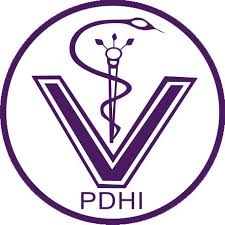The Effect of Triponyl Sulphate on Fetuses Development and Placental Abnormalities in Inducing Preeclampsia of Rattus norvegicus animal model
Keywords:
Triponyl sulfate, Alizarin Red, Preeclampsia, PlacentaAbstract
Preeclampsia is one of the obstetrical problems that can cause maternal and fetal morbidity and mortality. Preeclampsia causes the fetus born prematurely and low fetal weight. This is caused by high blood pressure which causes decrease of blood delivery to the placenta, so the supply of oxygen and food to the fetus decreases. As a result, fetal development inhibits and trigger born prematurely. More fatal, this disease cause the release of placental tissue from the uterus prematurely. The aim of this study was to determine the effect of administration of triponyl sulfate as induction of increased blood pressure in preeclampsia animal models, fetal development with alizarin red staining and placental abnormalities. The experimental animals were rats Rattus norvegicus mated with male rats monomating , 4 months old and 250-300 grams body weigh. Pregnant female rats were induced by triponyl sulfate 70 mg / kg BW (k +) and without induced by triponyl sulfate (k-). The results of the study showed that there were formation of the sternal bone in k- and malformation of the sternum bone at k +. Placental abnormalities occured in k +, it could be seen in the presence of ghos villi in blood vessel abnormalities in the preeclampsia placenta caused by there was no invation of trophoblast cells in the whole or partial spiral arteries and the mean of blood pressure increased.References
Cahyanti, R. D. 2012. Hubungan Kadar Vitamin D dan VEGF dalam memicu Progressitifitas dari Preeklampsia Berat [Skripsi]. Fakultas Kedokteran. Universitas Diponegoro.
FurukawaS,. Seigo,U. Koji,A. Masayoshi, H. Soichiro, and O. Izumi. 2011. Toxicological Pathology in the Rat Placenta. US National Library of Medicine National Institutes of Health. J ToxicolPathol. 2011 Jun; 24(2): 95–111.
Jaya, R. 2010. Hubungan Faktor Biologik Terhadap Kadar SFLT-1 Serum Pada Wanita Hamil Dengan Preeklampsia Berat. Universitas Andalas.
Mabie WC, BM Sibai. 2006. Hypertensive state of pregnancy. In : DeCherney AH, Pernoll ML, eds. Current obstettric and Gynecologic diagnois and treatment. 8th ed. Connecticut : Appleton & Lange. P. 380-97.
Manuaba I. B. G., 2007. Pengantar Kuliah Obstetri .Jakarta : EGC, pp 401-31.
Rahmayanti, R. 2010. Faktor-Faktor Resiko Maternal yang Berhubungan dengan Kejadian Preeklampsia Berat Pada Ibu di RSUP DR. M. Djamil [Sikripsi].
Padang.Santoso, H.B. 2004. Kelainan struktur Anatomi Skeleton Fetus Tikus Akibat Kafein. [Skripsi]. Fakultas MIPA Universitas Lambung Mangkurat. Banjarmasin
Downloads
Published
How to Cite
Issue
Section
License
Copyright (c) 2019 Wawid Purwatiningsih, Dhita Evi Aryani, Dian Vidiastuti, Yudit Oktanella, Aulia Firmawati

This work is licensed under a Creative Commons Attribution-NonCommercial 4.0 International License.













